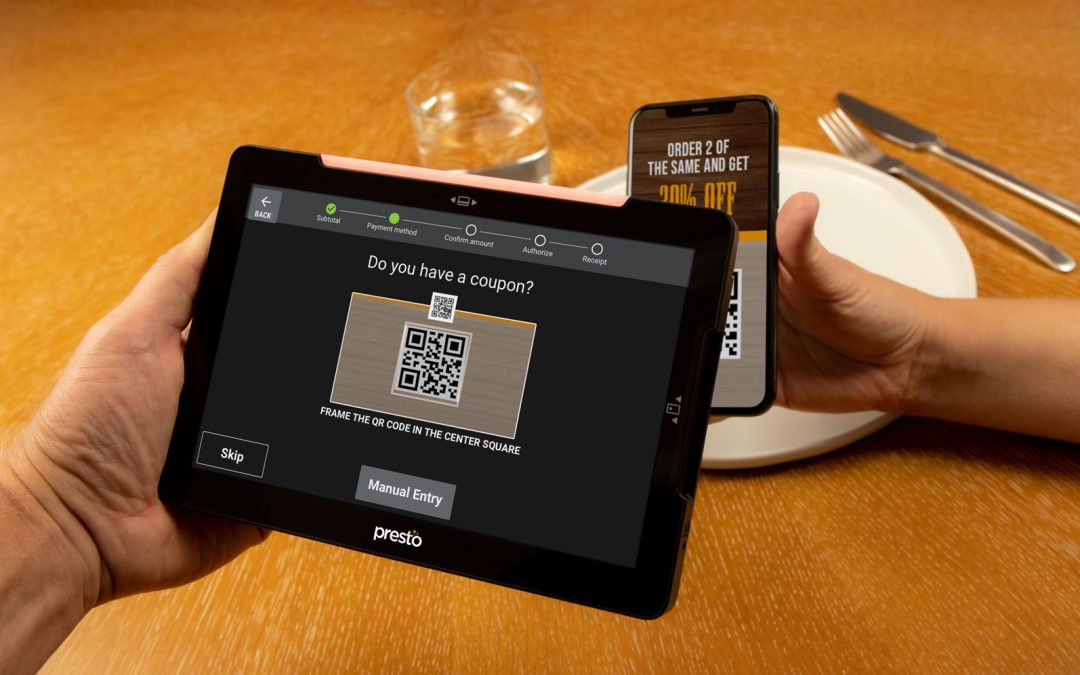As diners return to indoor dining they’re bringing with their newfound desire for the digital restaurant. Similarly, operators who embraced digital with a sliver of desperation early on have seen the value and are now eagerly bringing new digital tools inside.
Ziosk, a device and logistics provider known historically for tabletop devices, did a lot of work to embrace off-premises. The company helped partners bring their server tablets and tools outside to cater to curbside customers. For some partners, that was the entry point into a major digital push.
“We see partners using our tablets to operate curbside to make that a lot more efficient. We’ve seen tips improve, the off-premises and curbside pickup, to go got a lot more efficient and more attractive and a much better experience,” said Raymond Howard, co-founder and CMO at Ziosk. “Now everyone is drinking digital from a firehose.”
He said customers who got used to digital off-premises tools are bringing more technology inside their locations, namely QR codes, more tablets and tabletop payment devices.
Presto, a technology provider that recently made waves when it announced it would automate Checkers drive-thru operations with an AI chat assistant, is also getting back to in-restaurant operations.
Evergreen Restaurant Group, an operator in the Bloomin’ Brands system with Outback Steakhouse, Carrabba’s Italian Grill and Bonefish Grill locations, is putting that AI to work for servers. The company will roll out its Presto Server Assistant across its dozens of restaurants.
“The deployment of Presto Server Assistant should help us increase server efficiency while enhancing customer experience,” said Jeff Jones, president and CEO of Evergreen Restaurant Group. “We are excited to be expanding our partnership with Presto to bring this next-gen technology to our restaurants.”
The suite of tools offers point-of-sale integration, upsell prompts and gamification for servers to do more efficiently and connects with loyalty programs—another red-hot trend in the restaurant technology space.
The trick is managing all these solutions, manual tasks and time-consuming processes. That was not as important when nobody was in the restaurant, but operators are now “drowning in complexity because you have to manage them all,” said Howard.
That highlights a major trend in the restaurant technology space: connecting all this new stuff. It shows up in M&A, as well. Olo just announced it would acquire connectivity-focused Omnivore. DoorDash also announced it would acquire Bbot, which is also focused on connecting all the new digital tools to the core restaurant.
There is some real potential here for restaurants that bring that off-premises mindset indoors, for one, they can build out their customer data wherever people order.
“Naturally, where you get to is where retail got a few years ago,” said Howard. “From a consumer point of view and from a data perspective, you don’t see any lines of delineation between the on- and off-premises world. That’s, quite honestly, where things need go and what we’re focused on; making sure that were in a position to handle 100 percent of orders.”
These developments, and certainly more to come, continue to demonstrate that the acceleration of digital adoption brought about by COVID-19 has not slowed down and the digital mindset is essential for operators even as they see more smiling, happy faces in their actual restaurants.


